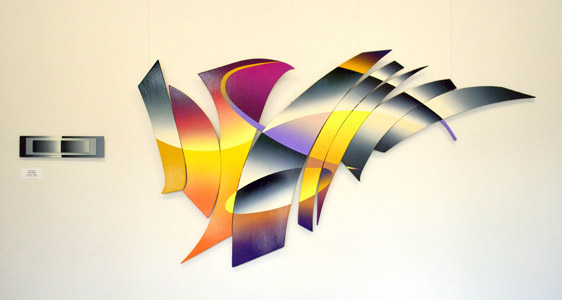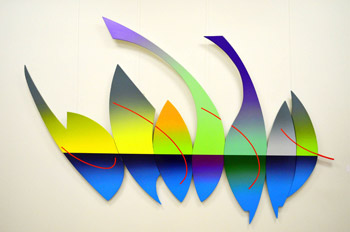
PRICING ART

Who sets the price of art?
Creativity cannot be adequately compensated with monetary exchange. While all people can be creative, artists – addicted to the creative process – make a sacrifice by not participating in the rat race. The price of art is not for the material but for the creativity expressed and the energy expended. People with a passion for art acquire knowledge and practice their skills to materialize the imagination.
The artist does not keep a customer in mind while creating; the focus is on manifesting an idea. Appreciators of art choose to support this culture.

Artist Ray Burggraf-Hell's Bells-Acrylic on Wood - 46" x 89"
The value of art is not based solely on quality. It is not calculated by hours, material, or colors. Rather, artists and buyers determine the price by the end result, in part, by how beautiful they judge the work to be.
Most importantly, the collector should like the work, which should speak for itself and resonate with the buyer. While there is a link between art and money, there is a stronger link between art and creativity. A work should be seen as art first and luxury item second.
A patron may buy a work of art for prestige, as an investment, or just to support the creative culture. Though gallery owners, dealers, and museum curators influence prices by branding and promoting artists and their works, reputations of the artist and the art itself play a major role in art prices.
Why art pricing cannot be quantified
New artists sometimes think of time spent working on paintings like the time spent on any part-time job which is paid by the hour. But it is impossible to accurately calculate the time artists invest in their work, and they are generally not interested in bookkeeping.
The artist spends time forming the composition in the mind, bringing the composition onto the canvas, contemplating the manifested work, and attempting to improve and perfect it, while knowing that perfection is impossible.

Artist Ray Burggraf-Jungle River-Acrylic on Wood - 56" x 86"
Many experienced artists readily accept they cannot track the time spent completing a work of art. Their focus is on the creative thinking it takes to manifest the art, not counting the hours and charging for them.
Also, the price of art is not determined merely by the cost of painting supplies. Art is not priced by the square inch or the materials used. The greatest factor in the price of art is the artist’s creativity, and to a lesser extent, skill. A quality canvas covered with branded pigment can only become a priceless object with the help of a creative and passionate artist. The canvas is enlivened by the imagination and energy of the artist.
Beyond this intrinsic value of art lies the extrinsic value often based on a collector’s taste, personal choice and whim.
As art critic Blake Gopnik writes in Newsweek on the subject, “Aesthetics are the bedrock the art market is built on. But, for want of any other reliable measure, they often get tallied in dollars.”
Brinda Pamulapati, owner/managing director, of Venvi Art Gallery in Tallahassee, can be reached at (850) 322-0965 or visit www.VenviArtGallery.com